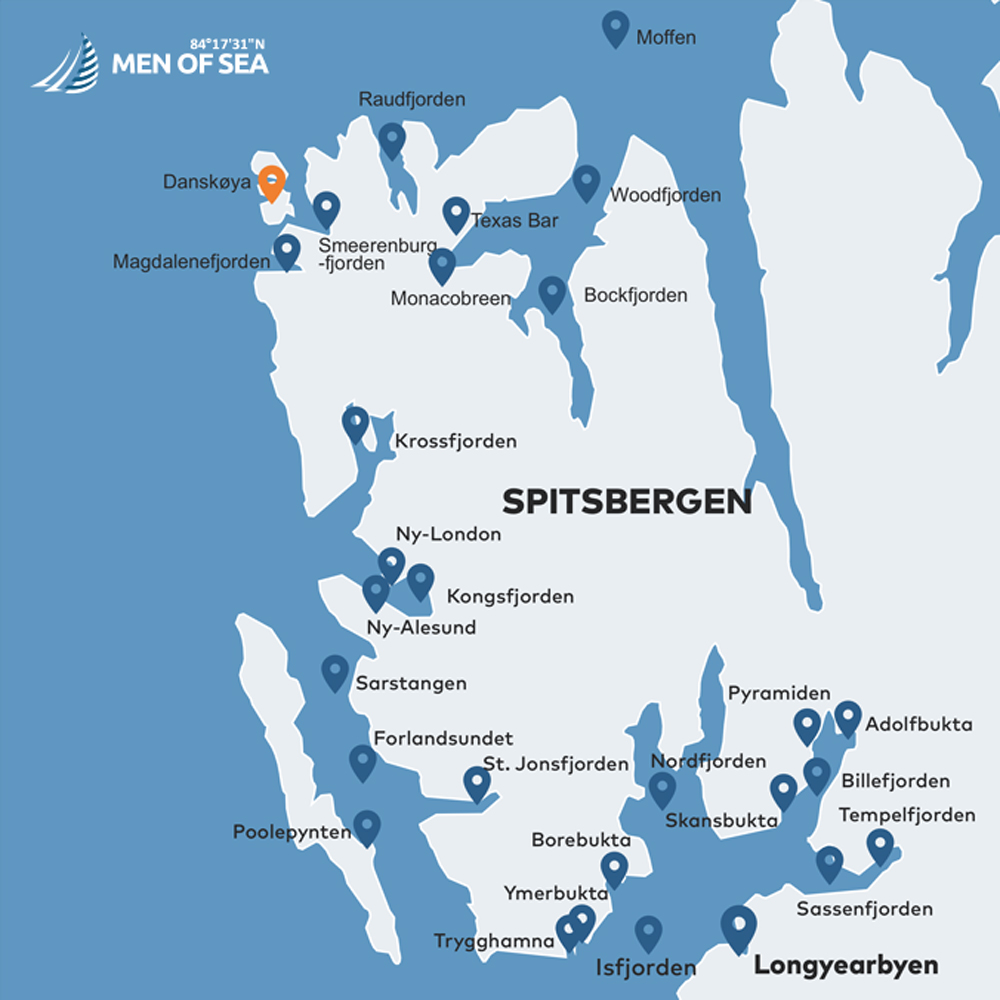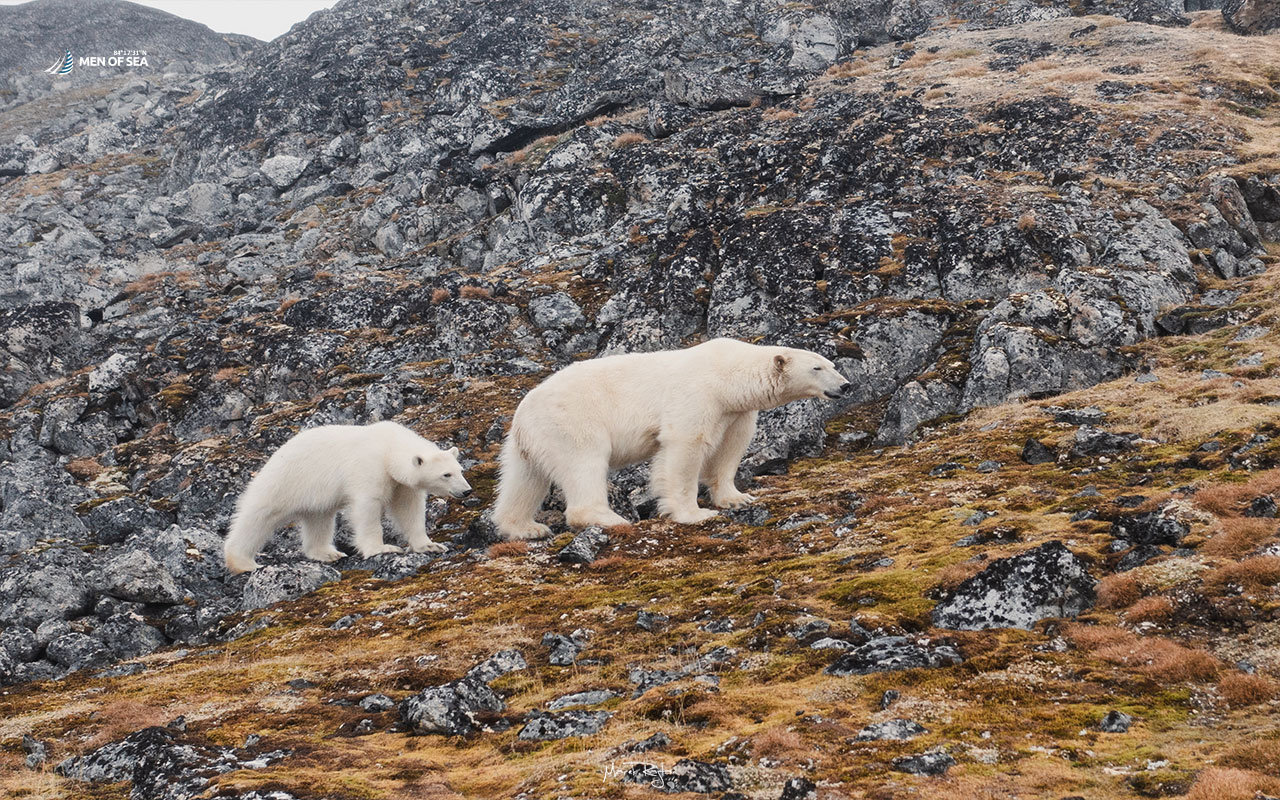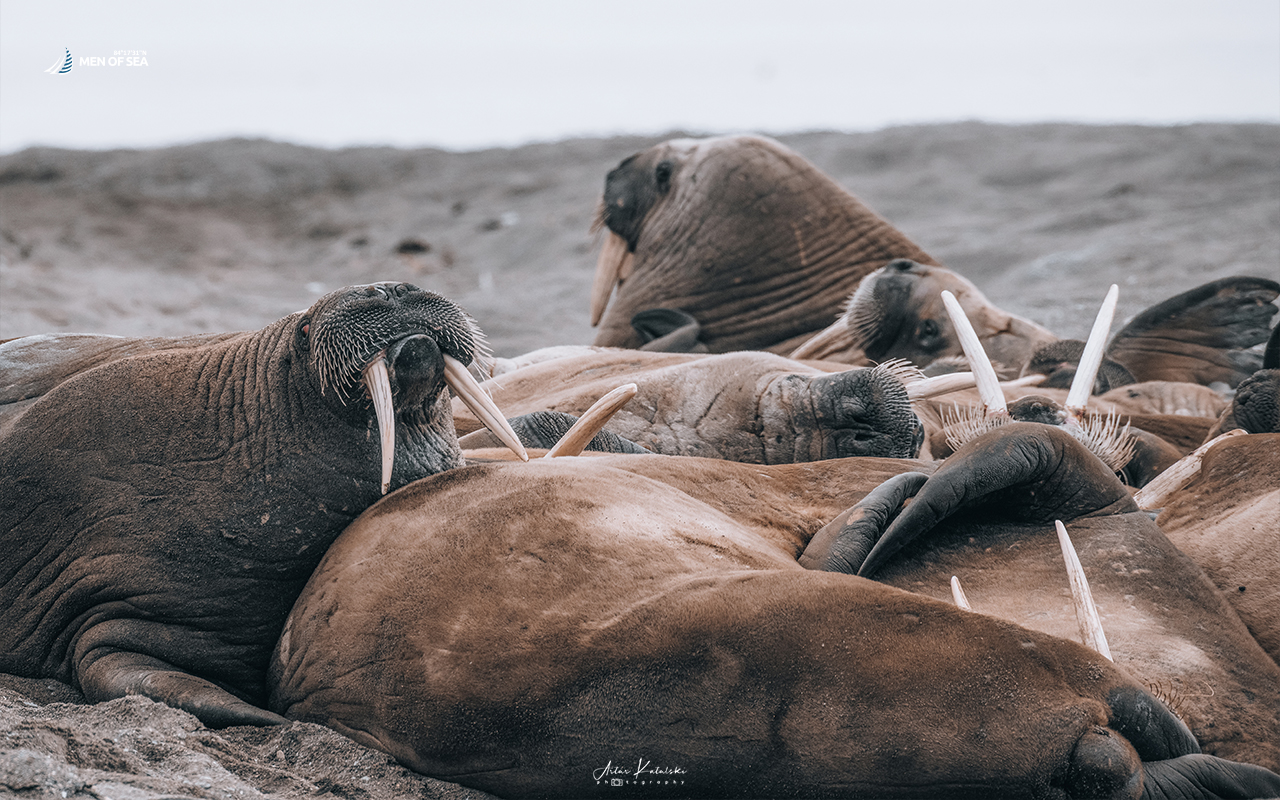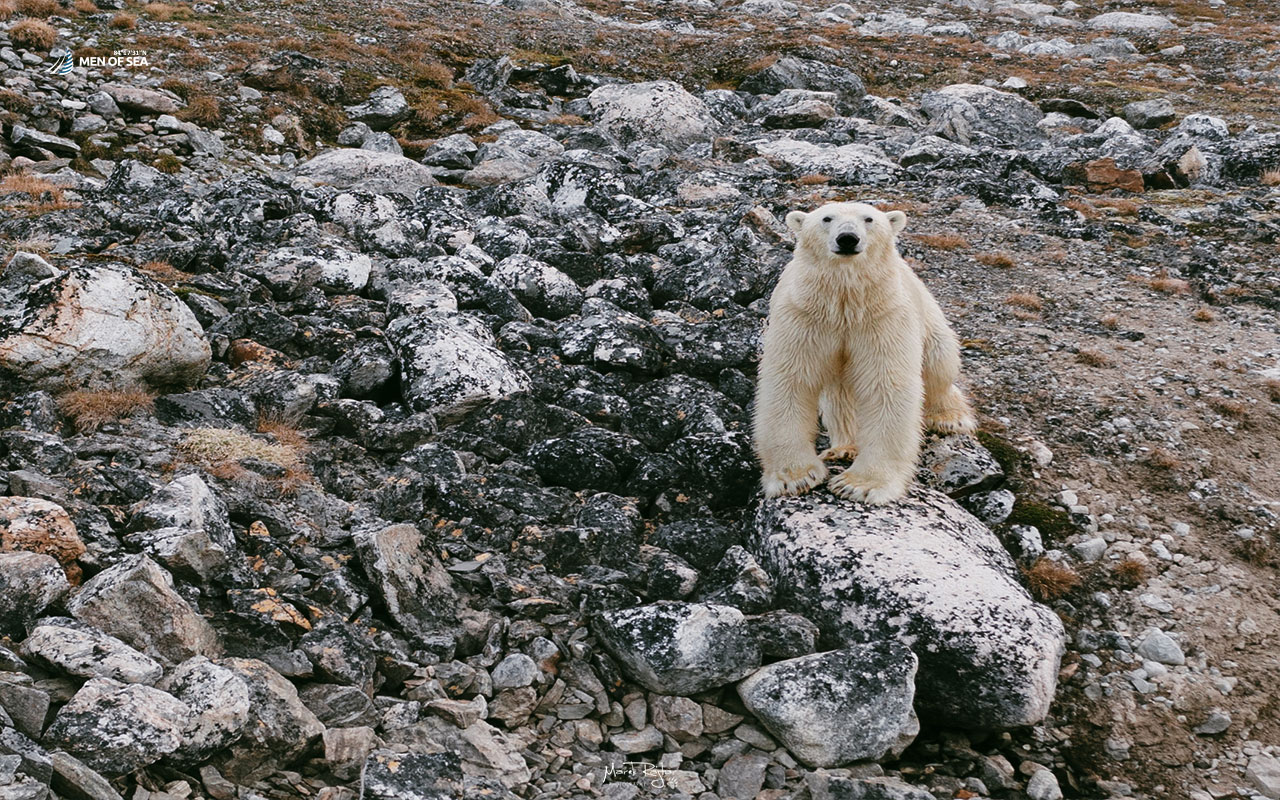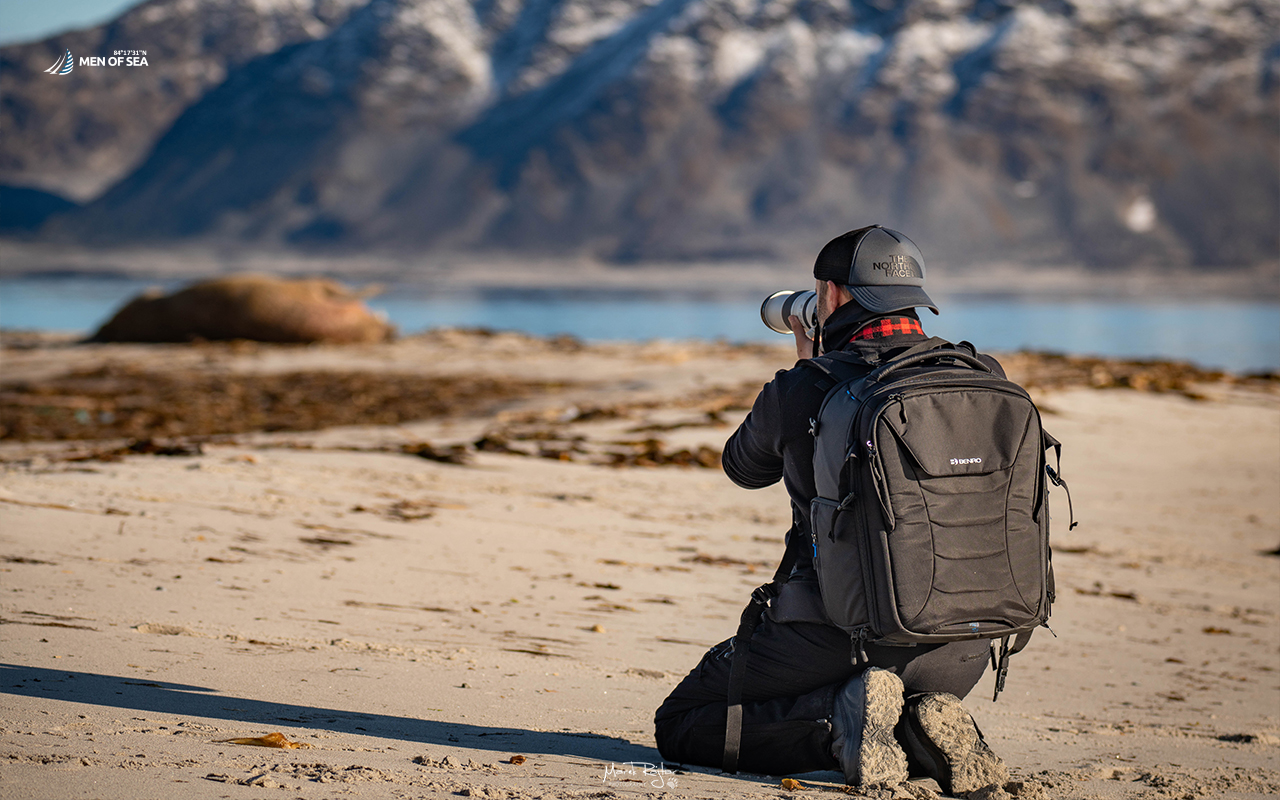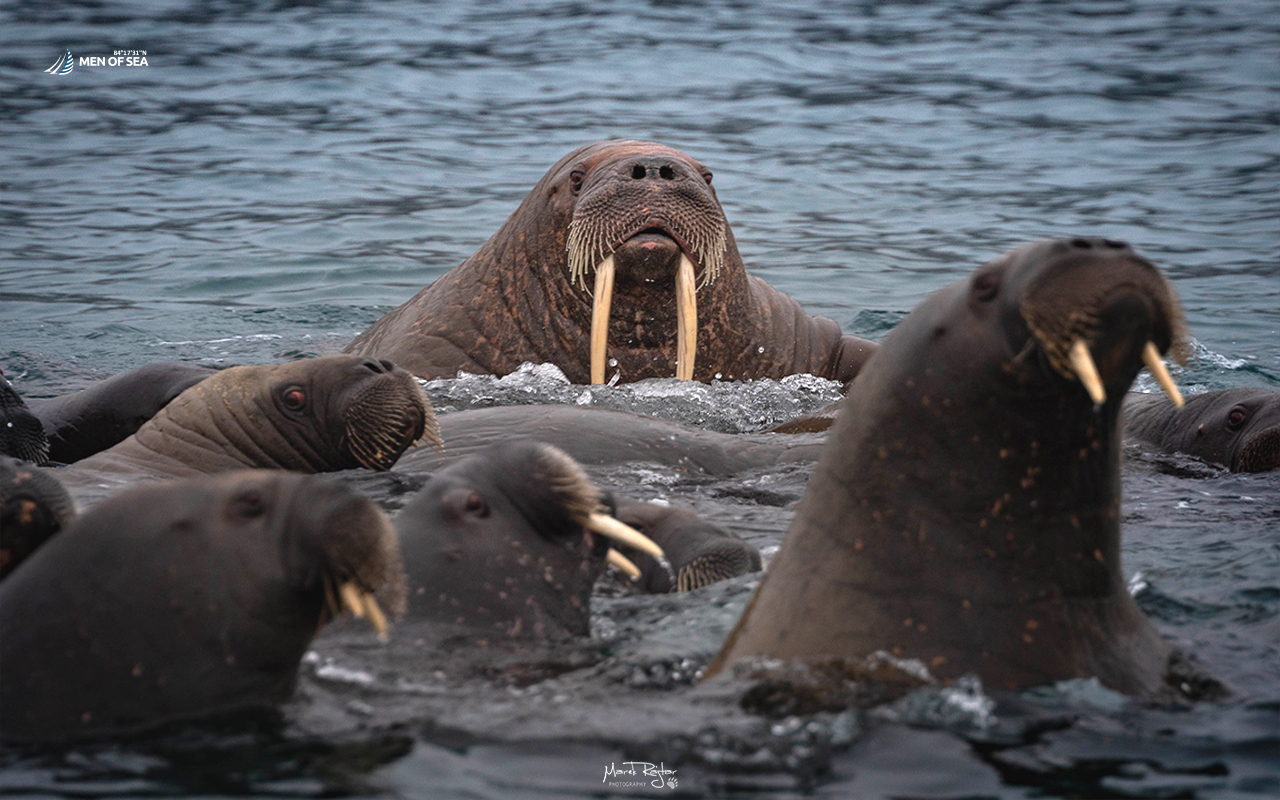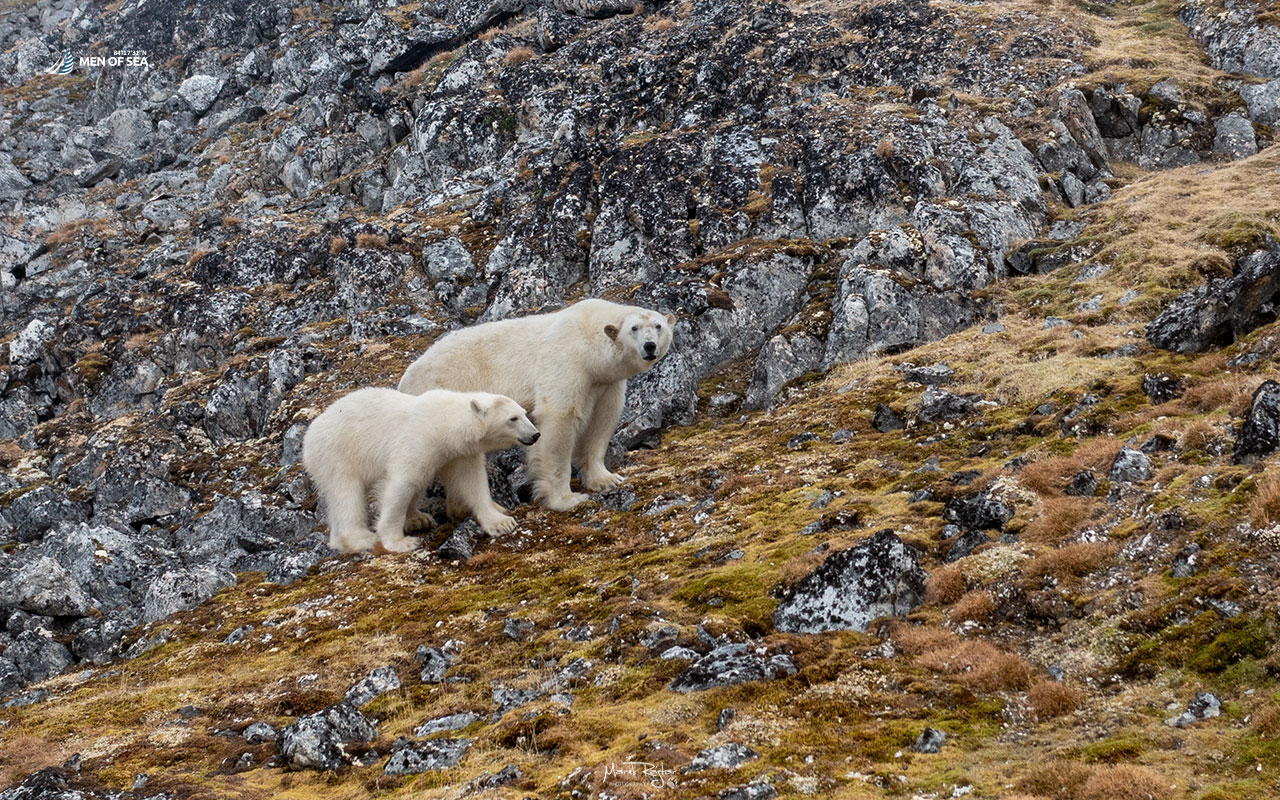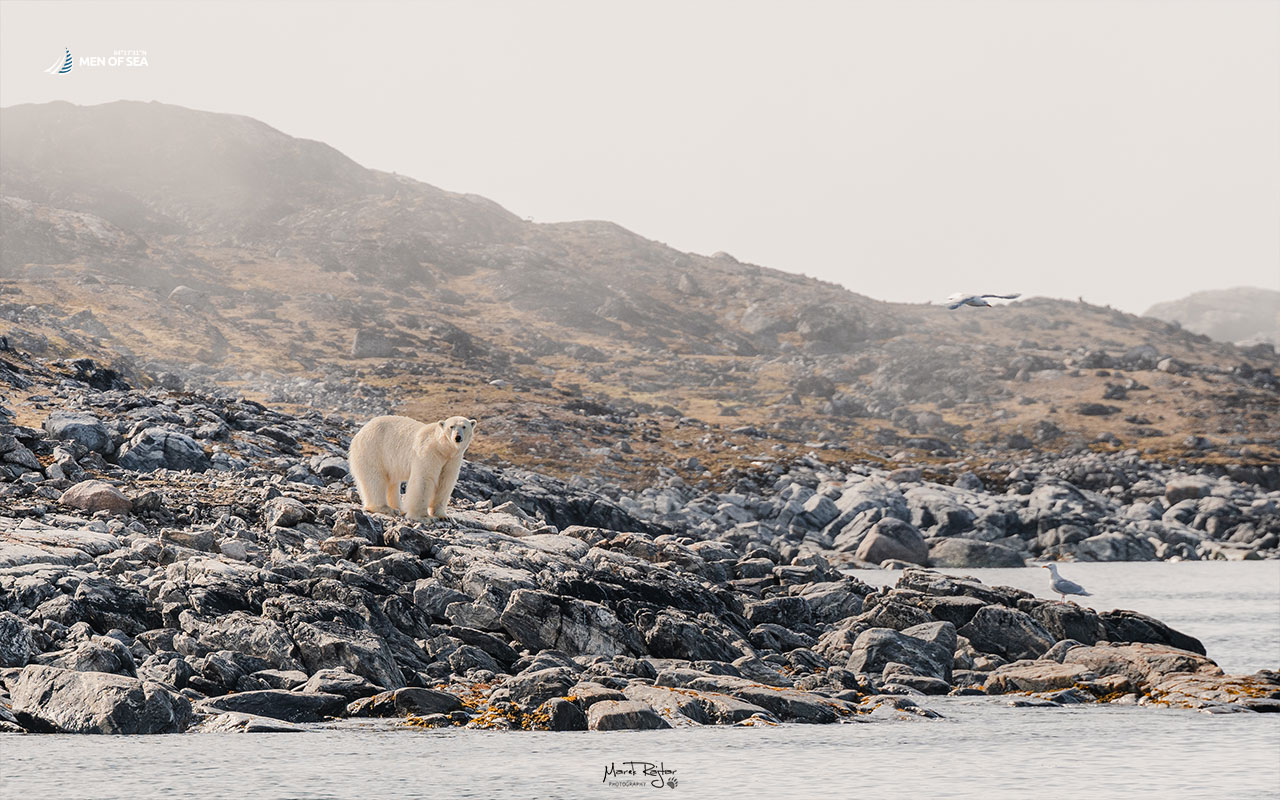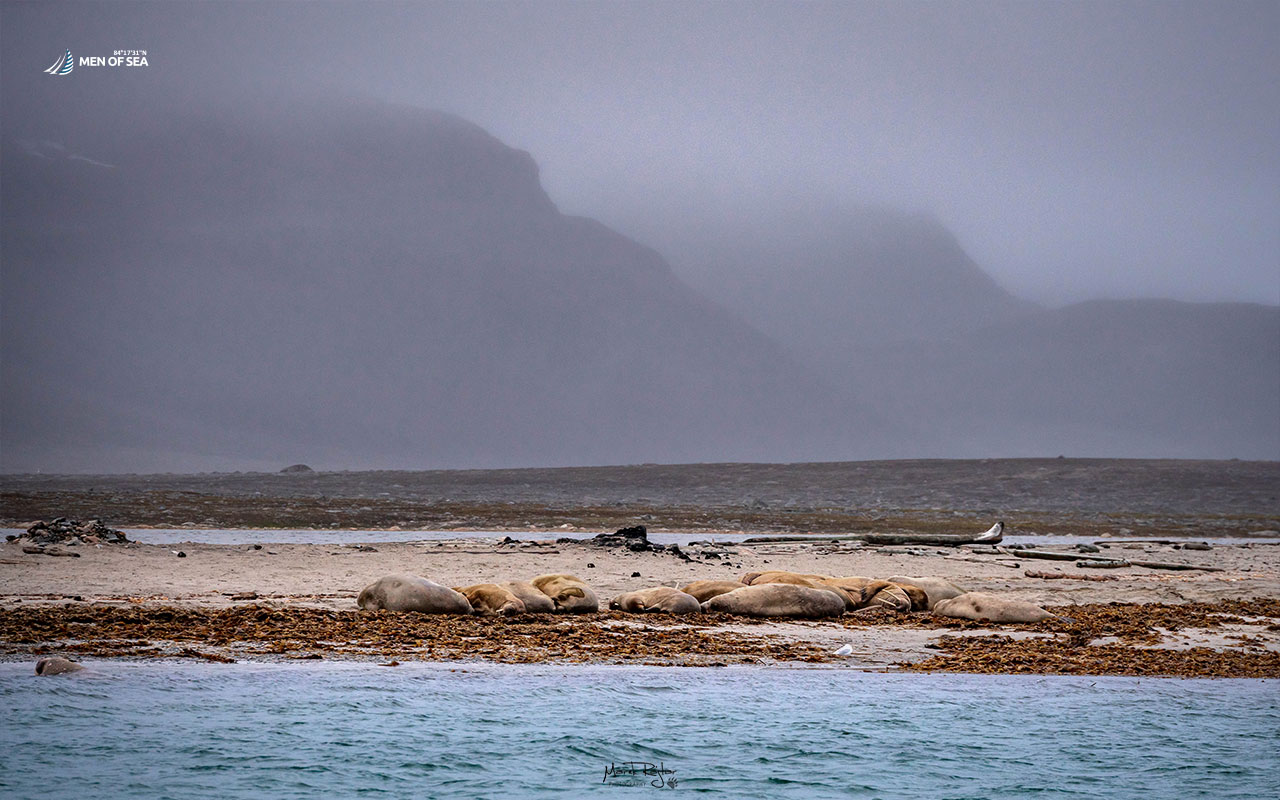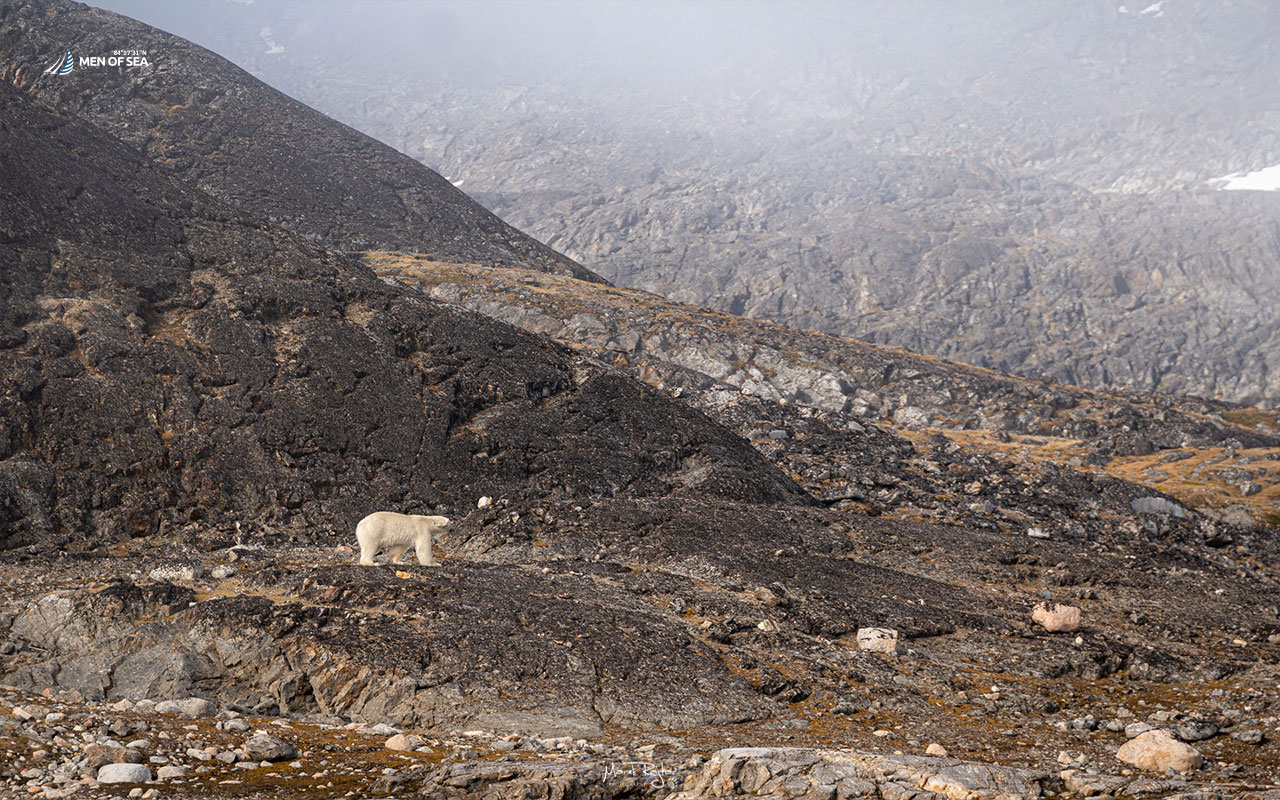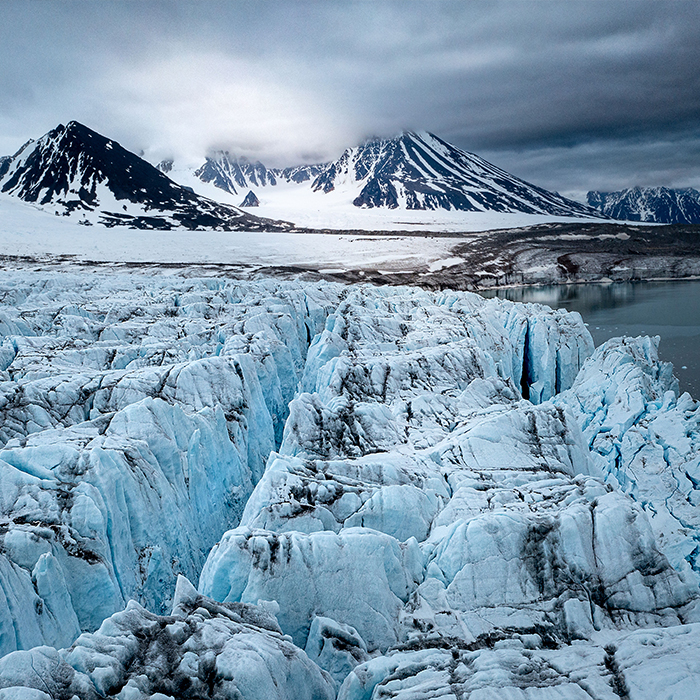
DANSKØYA
Land of Bears and Birds
BASIC INFORMATION
Danskøya is an uninhabited island located northwest of Spitsbergen. This place is famous for its incredibly rich fauna – numerous bird species and resident polar bears, which can be seen here throughout the year.
Around 3,000 polar bears reside on Spitsbergen, appearing across the island, but they are most commonly sighted in this region. For instance, in 2017, a dead whale was washed ashore here, attracting bears, much to the delight of tourists.
Modest relics of the past and rich fauna
In the north of the island lies the famous Virgohamna Bay. While it may appear grey and unremarkable, it it a place of significant cultural heritage. Remnants of a Dutch whaling station and blubber ovens are found here. It was from this place, in the late 19th and early 20th centuries, that Andrée and Wellman embarked on their famous, unsuccessful attempts to fly by balloon to the North Pole. The name Virgohamna derives from Andrée’s steamship – the Virgo. The entire area is protected, as remnants of preparations for polar expeditions are scattered throughout: fragments of hangars, gasworks, wires, nails, planks and more. To explore the described area, written permission from the Governor is required.
For wildlife enthusiasts, Danskøya is primarily a place where polar bears can be encountered year-round. Since they feed on seals, carrion, and bird eggs, they are more abundant in spring, when the ice has not yet melted and food is easier to find. In summer, bears mainly roam the small islands in search of bird eggs. They often linger near glacier fronts, where seals stay.
In the Danskøya region, from Magdalenefjorden to Hamiltonbukta, a large number of bird species can be observed residing on the cliffs. In total, there are 16 colonies of northern fulmars and several colonies of guillemots, Arctic terns, puffins, and ivory gulls. Two unique islands located near Danskøya – Moseøya and Skorpa – have been entirely transformed into bird nature reserves due to their valuable specimens. Approaching the islands within a distance of less than 300 meters is strictly prohibited from May 15th to August 15th.
Arctic foxes occasionally appear near the bird cliffs. Sometimes walruses and seals can also be spotted here – most commonly bearded seals, ringed seals, and harp seals. And in the sea, of course, whales, especially minke whales and belugas.
On Danskøya Island and nearby Amsterdamøya Island, there are many freshwater lakes inhabited by common trout, as well as its anadromous varieties that migrate between the sea and freshwater. On one of the beaches of Amsterdamøya Island, there is a permanent walrus colony.
